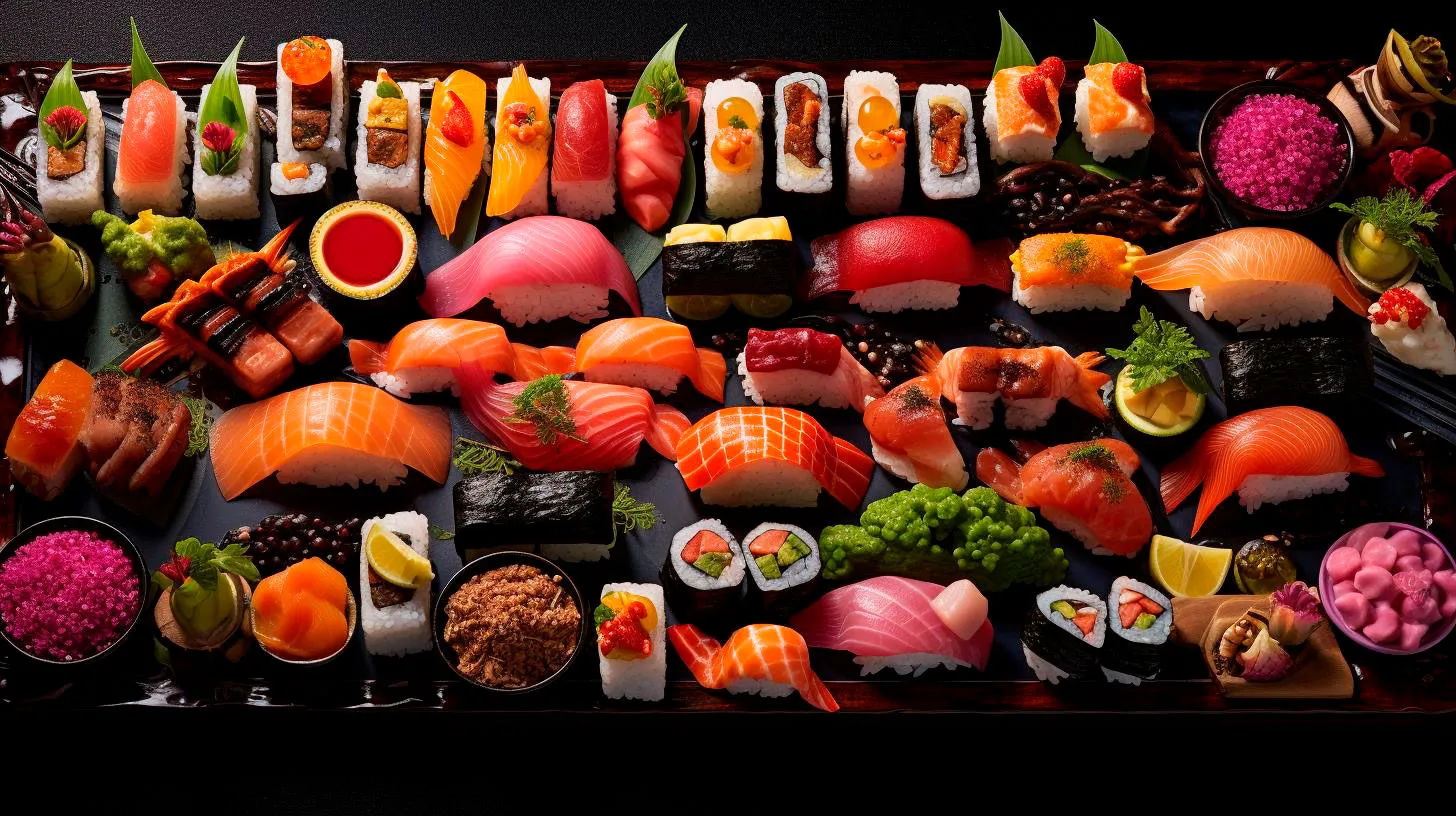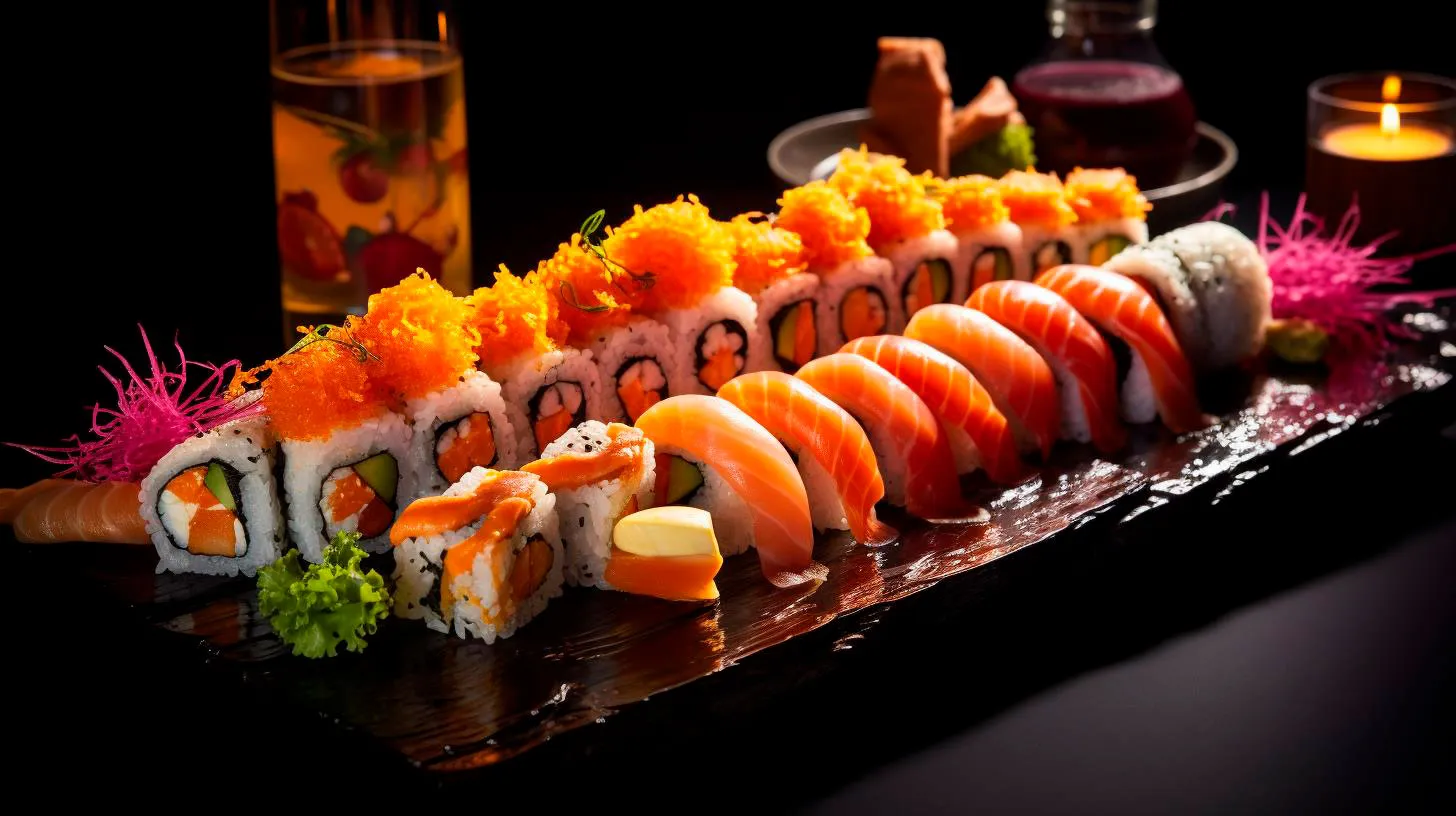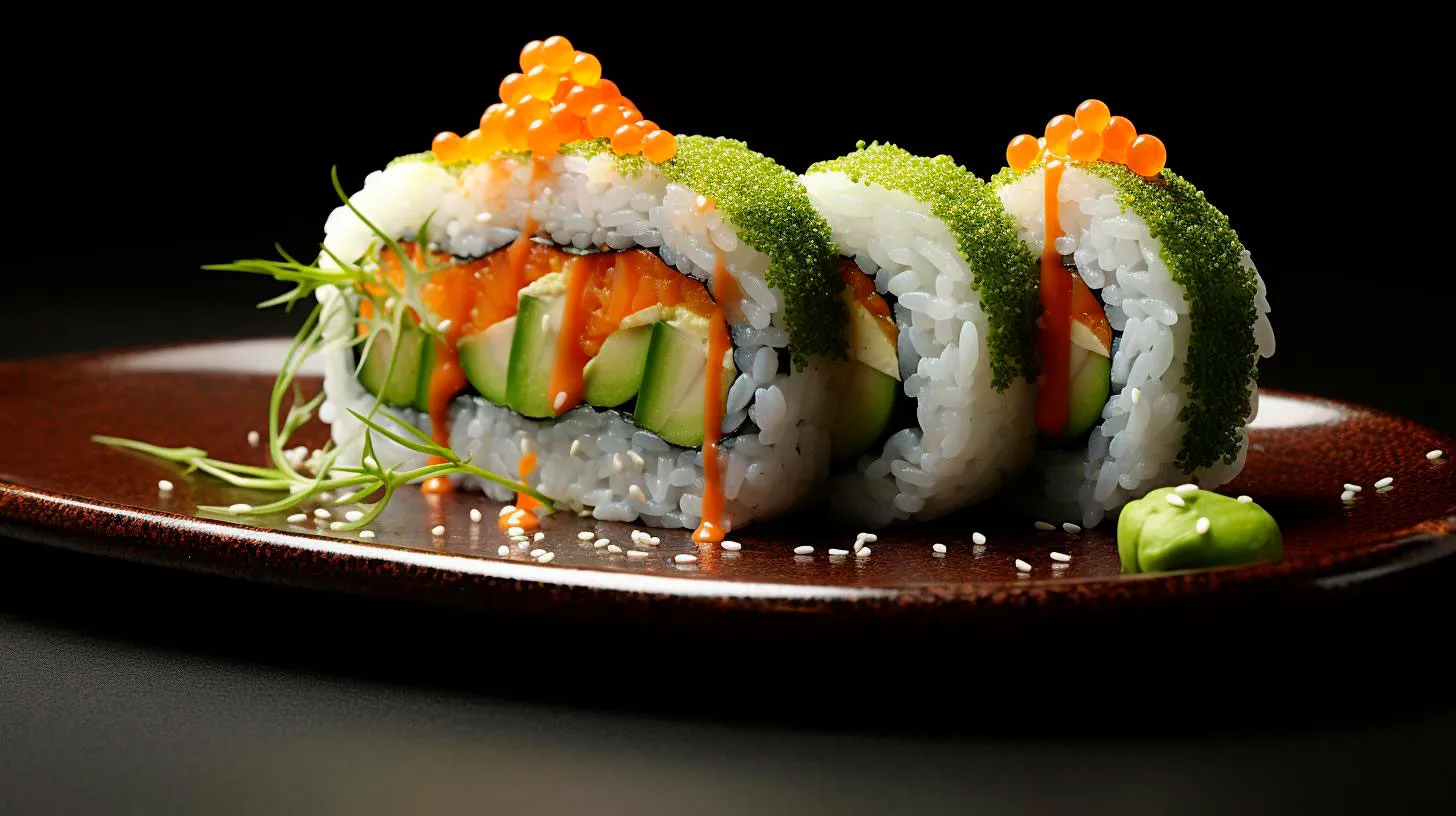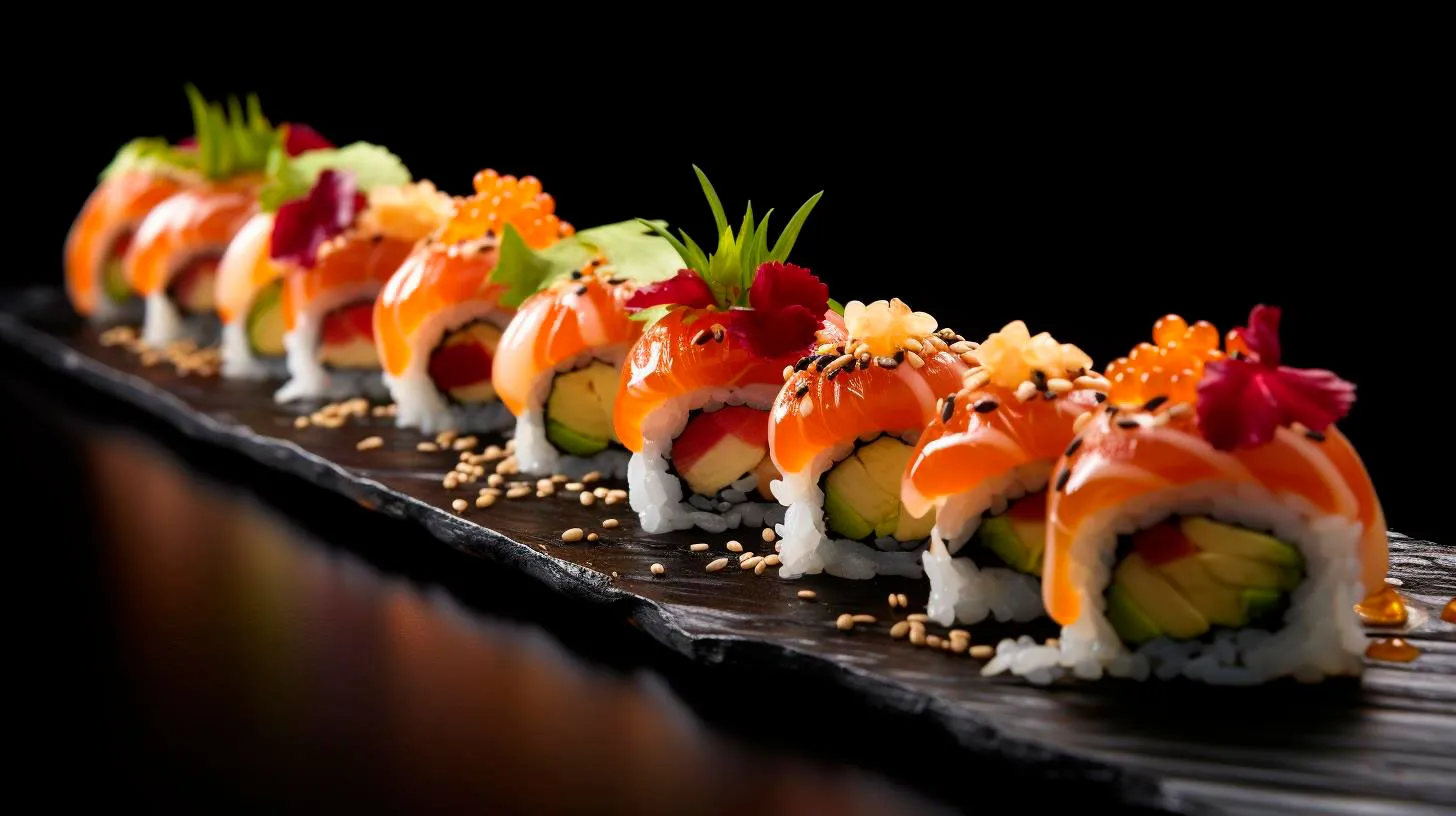Exploring the Key Differences in Caring for Sushi Knives vs Regular Kitchen Knives
The Anatomy of Sushi Knives
Sushi knives, also known as yanagiba or sashimi knives, are specifically designed for preparing sushi and sashimi. They are characterized by their long, slender blades, typically ranging from 210mm to 360mm in length. The single-bevel blade is made of high-carbon steel, which provides exceptional sharpness and precision. These knives require delicate care and attention to maintain their cutting performance over time.
Caring for Sushi Knives
Proper care of sushi knives is crucial to their longevity and cutting ability. Here are some key aspects to consider when maintaining your sushi knives:
1. Hand Washing
Unlike regular kitchen knives that may be dishwasher safe, sushi knives should always be washed by hand. After each use, rinse the blade with warm water and mild detergent. Use a soft sponge or cloth to gently remove any food particles. Avoid using abrasive scrubbers or harsh detergents, as they can damage the blade’s delicate edge.
2. Drying
After washing, pat dry the knife immediately. Leaving it to air dry can lead to rusting, which is detrimental to the blade. Ensure that all moisture is removed, including the handle, to prevent any potential issues.
3. Sharpening
Sushi knives have a single bevel, which requires a unique technique for sharpening. It is recommended to seek professional assistance when sharpening sushi knives to ensure the correct angle and precision. Regular sharpening is essential to maintain the knife’s sharpness and cutting performance.
4. Storage
Proper storage plays a significant role in prolonging the lifespan of sushi knives. It is advisable to use a blade guard or a wooden sheath to protect the blade when not in use. Avoid storing sushi knives in drawers along with other utensils, as this can lead to contact and potential damage.
Benefits of Sushi Knives
- Superior cutting performance for precision tasks such as slicing sashimi or sushi rolls
- Narrow blade design allows for clean and precise cuts without tearing or bruising delicate ingredients
- High-carbon steel ensures exceptional sharpness, resulting in minimal effort while cutting
- Single bevel design provides a high level of control and maneuverability
Caring for Regular Kitchen Knives
While sushi knives require specialized care, regular kitchen knives also need proper maintenance to extend their lifespan and ensure optimal performance. Here are some general tips for caring for your kitchen knives:
1. Hand Washing
Similar to sushi knives, kitchen knives should always be washed by hand. Dishwashers can be too harsh on the blades, causing damage or dullness. Handwashing with warm water and mild detergent is the best way to clean them.
2. Drying
After washing, thoroughly dry the knives to prevent any potential rusting. Leaving them wet can also lead to damage or dullness over time.
3. Sharpening
Regularly sharpening your kitchen knives is essential to maintain their cutting performance. You can use a sharpening stone or a honing rod to keep the blades sharp. Follow the manufacturer’s instructions or seek professional help for best results.
4. Storage
Store kitchen knives in a knife block, magnetic strip, or a knife drawer organizer to prevent damage or accidents. Avoid storing them loosely in drawers where they can come into contact with other utensils.
Benefits of Regular Kitchen Knives
- Versatility for various cooking tasks like chopping, dicing, and mincing
- Wide range of blade shapes and sizes to accommodate different ingredients and cutting styles
- Durable and sturdy construction for everyday use
- Ease of maintenance with standard cleaning and sharpening techniques
In conclusion, caring for sushi knives versus regular kitchen knives involves distinct approaches. Sushi knives demand special attention due to their design and material. Precise hand washing, thorough drying, professional sharpening, and proper storage are key to maintaining sushi knives in optimal condition. On the other hand, regular kitchen knives also require careful handling but with more flexibility in terms of cleaning and sharpening. Understanding these differences and following the recommended care practices will ensure that both types of knives perform at their best and remain an indispensable tool in your culinary journey.
Sushi Knife vs Other Kitchen Knives: A Comparison
In this article, we will delve into the differences between the sushi knife and other kitchen knives, their strengths, and how they can enhance your culinary experience.
The Sushi Knife: Unleashing Precision
Designed specifically for slicing raw fish and creating masterful sushi rolls, the sushi knife is a versatile tool that has gained popularity not only among sushi chefs but also among home cooks. Here are some key features and advantages of using a sushi knife:
- Ultra-Sharp: The sushi knife boasts an ultra-thin and razor-sharp blade that enables clean and precise cuts. Its unique tapered edge ensures minimal resistance, allowing you to effortlessly glide through delicate ingredients, such as fish and vegetables.
- Single-Beveled: Unlike most kitchen knives, the sushi knife is usually single-beveled, with a blade ground on only one side. This asymmetrical edge provides enhanced control and precision, resulting in uniformly thin slices.
- Long and Narrow Blade: Sushi knives typically have longer and narrower blades compared to other kitchen knives. This elongated shape allows for long slicing motions and the creation of beautiful, paper-thin cuts.
- Delicate Ingredients: The precise cutting ability of sushi knives makes them ideal for handling delicate ingredients commonly found in Japanese cuisine. From sashimi to maki rolls, a sushi knife ensures each piece is crafted with perfection.
Other Kitchen Knives: Versatility at its Finest
While the sushi knife undoubtedly excels in precision and finesse, other kitchen knives cater to a broader range of culinary tasks. Let’s explore some popular kitchen knives and their distinctive features:
1. Chef’s Knife
The chef’s knife, also known as a cook’s knife, is one of the most versatile knives in the kitchen. Its multi-purpose nature allows it to handle a wide array of chopping, slicing, and dicing tasks. Key features of a chef’s knife include:
- All-Purpose Blade: The chef’s knife typically has a broad and curved blade, making it suitable for a variety of cutting techniques.
- Comfortable Grip: With a sturdy handle and a balanced design, the chef’s knife offers excellent control and ease of use.
- Wide Range of Ingredients: From fruits and vegetables to meat and herbs, the chef’s knife can handle almost anything you throw at it.
- Efficient and Time-Saving: Its versatility eliminates the need for multiple knives, saving you time and effort in the kitchen.
2. Bread Knife
To effortlessly slice through crusty loaves of bread without squishing or tearing, a bread knife is a must-have in every kitchen. Here are its notable features:
- Serrated Blade: The bread knife is equipped with a serrated blade that glides through bread without crushing it, resulting in clean and even slices.
- Long and Narrow Blade: Its long blade allows for longer, uninterrupted cuts, ensuring smooth and neat slices of bread.
- Non-Food Uses: Apart from bread, this knife can also be used to slice through delicate pastries, tomatoes, and cakes without deforming them.
The Key Takeaway: Choosing the Right Knife for the Task
When it comes to kitchen knives, each type serves a unique purpose. While the sushi knife is a master of precision for delicate Japanese dishes, the chef’s knife and bread knife cater to a broader spectrum of kitchen needs. Here’s what you need to remember:
- Consider the specific tasks you frequently perform in the kitchen. This will help you determine which knife will best suit your needs.
- Invest in high-quality knives to ensure durability, sharpness, and overall performance.
- Proper maintenance, such as sharpening and regular honing, is essential to keep your knives in top condition.
Enhance your culinary experience by choosing the right knife for the job. Whether it’s delicate precision with a sushi knife or versatility with a chef’s knife, the key to culinary success lies in your knife collection. Happy slicing!
How to Properly Care for and Maintain Other Kitchen Knives
Why is Proper Knife Care Essential?
Before we delve into the various techniques, let’s understand why taking care of your kitchen knives is so important:
- Preserves blade sharpness: A well-maintained knife retains its sharpness longer, ensuring precise cuts and reducing the risk of accidents.
- Enhances knife lifespan: Proper care prevents rust, corrosion, and damage, extending the lifespan of your knives.
- Improves hygiene: Maintaining clean and sanitary knives prevents the cross-contamination of food, promoting a safe cooking environment.
- Protects your investment: High-quality knives are a significant investment, and proper care ensures you get the most out of your purchase.
Proper Knife Care and Maintenance Tips
1. Hand Washing Only
Avoid the temptation to toss your knives in the dishwasher, as the harsh detergent, heat, and motion can damage the blades and handles. Instead, follow these hand washing techniques:
- Use warm, soapy water to remove debris and stains.
- Rinse and dry your knives immediately after washing to prevent water spots and corrosion.
- Never soak your knives, as this can cause the wood handles to crack or the blade to rust.
2. Proper Storage
Storing your knives correctly is vital for both their safety and longevity. Here are some tips:
- Use a knife block, magnetic strip, or a knife roll to keep your knives organized and protected.
- Avoid storing knives loosely in drawers, as they can become damaged or cause injury while rummaging through the clutter.
- Consider using blade covers or knife guards to provide extra protection.
3. Regular Sharpening
To maintain optimal cutting performance, regular sharpening is a must. Here’s how to sharpen your knives:
- Invest in a high-quality sharpening stone or honing rod.
- Hold the knife at a 20-degree angle and apply even pressure as you swipe the blade across the sharpening stone.
- Repeat the process until you achieve the desired sharpness, and remember to sharpen both sides of the blade equally.
4. Honing Between Sharpenings
While sharpening removes metal to restore the blade’s sharpness, honing maintains its alignment. Follow these steps:
- Use a honing rod, also known as a sharpening steel.
- Hold the rod vertically and swipe the blade against it at a 20-degree angle, starting from the base to the tip.
- Repeat the process three to four times on each side of the blade.
5. Avoid Cutting on Hard Surfaces
Knives are not meant to be used on hard surfaces like granite or glass cutting boards. Here’s why:
- Hard surfaces can dull the blade quickly.
- Instead, opt for wooden or plastic cutting boards to preserve the knife’s sharpness.
- Avoid cutting directly on ceramic plates or metal surfaces.
6. Handle with Care
To maintain the integrity of your knives, handle them with the utmost care:
- Avoid using the knife’s blade to scrape or move ingredients on the cutting board.
- Never use your knives to pry open cans or containers.
- Avoid twisting or bending the blade, as it may cause irreparable damage.
Key Takeaways
Proper care and maintenance help in preserving the performance and lifespan of your kitchen knives. Remember the following key takeaways:
- Hand wash your knives to prevent damage from dishwashers.
- Store knives properly using blocks, magnetic strips, or knife rolls.
- Regular sharpening and honing maintain cutting performance.
- Use cutting boards made of wood or plastic to avoid dulling the blade.
- Handle knives with care and avoid improper use.
By following these guidelines, you will ensure your kitchen knives remain sharp, durable, and safe to use for years to come. Take the time to care for your knives properly, and they will reward you with top-notch performance in the kitchen.
Understanding the Care and Maintenance of Sushi Knives
To maintain their effectiveness and prolong their lifespan, it is crucial to understand the care and maintenance required for sushi knives. In this article, we will explore the key aspects of caring for and maintaining sushi knives.
Why Care and Maintenance Are Important
Proper care and maintenance of sushi knives not only ensure their longevity but also maintain their performance. Here are a few reasons why caring for your sushi knives is essential:
- Prolongs the lifespan of the knife
- Maintains the sharpness and precision of the blade
- Prevents corrosion and rust
- Ensures hygiene and food safety
Caring for Sushi Knives
Now that we understand the importance of caring for sushi knives, let’s dive into the key steps involved in their maintenance:
1. Handwashing
Always wash your sushi knife by hand using warm soapy water immediately after each use. Avoid using harsh detergents or abrasive scrubbers that can damage the blade.
2. Drying
After washing, thoroughly dry the knife to prevent moisture buildup. Use a clean towel and ensure both the blade and handle are completely dry before storing.
3. Storing
Proper storage is crucial to keep your sushi knife in optimal condition. Consider investing in a knife sheath or blade guard to prevent accidental damage. Store the knife in a dry and safe place away from other utensils to avoid any potential nicks or cuts.
4. Sharpening
Maintaining a sharp blade is key to achieving precise cuts. Regularly sharpen your sushi knife using a whetstone or professional sharpening service. Follow the manufacturer’s guidelines for the recommended sharpening angle.
Key Takeaways
- Caring for sushi knives is essential for their longevity and performance.
- Handwash sushi knives using warm soapy water after each use.
- Thoroughly dry the knife before storage to prevent moisture buildup.
- Invest in a knife sheath or blade guard for safe storage.
- Regularly sharpen your sushi knife to maintain its sharpness and precision.
Understanding the care and maintenance of sushi knives is fundamental for any sushi chef or enthusiast. By following these guidelines, you can ensure that your sushi knives stay in optimal condition, allowing you to create beautiful and delicious sushi creations with ease.



